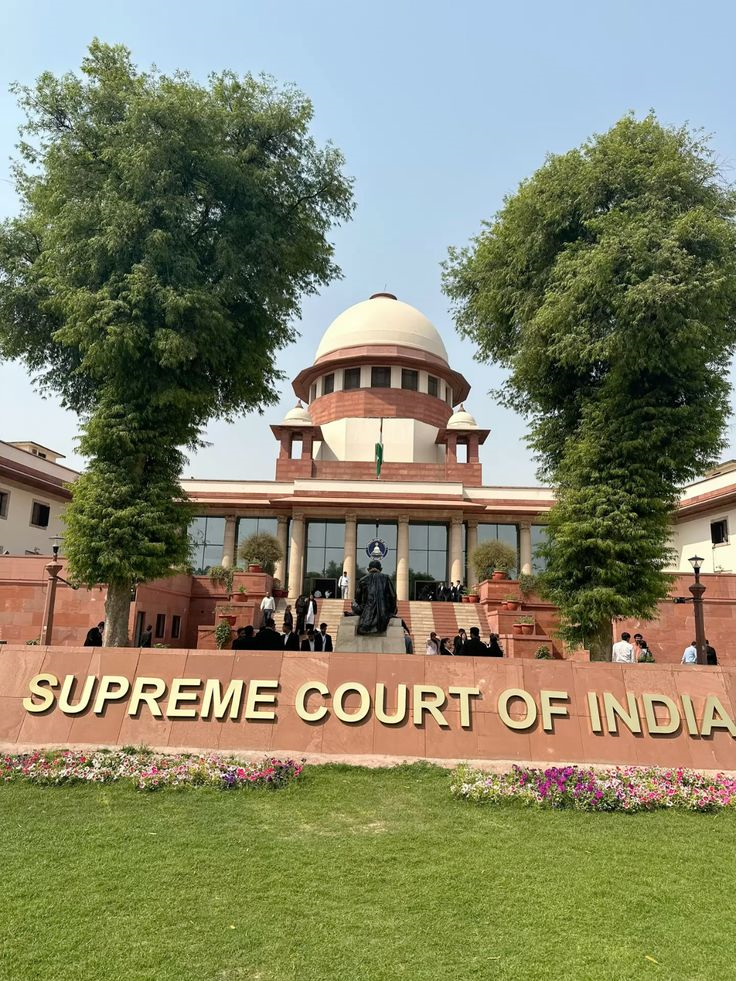Overview of the Writ Jurisdiction
The Constitution of India guarantees certain fundamental rights to every citizen, and to ensure their effective enforcement, it empowers the Judiciary with special remedial powers. One of the most important tools available for the protection of fundamental rights is the Writ Jurisdiction of the Supreme Court under Article 32. Dr. B. R. Ambedkar described Article 32 as the “Heart and Soul of the Constitution”, because it directly enables individuals to approach the Supreme Court when their fundamental rights are violated. The Supreme Court is therefore not only the highest court of appeal but also a guardian of fundamental rights and the protector of constitutional liberties. The writ jurisdiction reinforces the rule of law and ensures that no authority, including the government, can act arbitrarily or illegally.
Constitutional Basis of Writ Jurisdiction
Article 32(1) provides that any person can directly approach the Supreme Court for the enforcement of their fundamental rights. Article 32(2) empowers the Supreme Court to issue writs, including Habeas Corpus, Mandamus, Prohibition, Certiorari, and Quo Warranto, for the enforcement of such rights. This jurisdiction is not merely appellate or supervisory; it is original and directly accessible to individuals without the need to approach lower courts first.
Unlike the Supreme Court, the High Courts under Article 226 have the power to issue writs not only for fundamental rights but also for any other legal right. However, Article 32 is unique because it makes the enforcement of fundamental rights a guaranteed remedy. The jurisdiction under Article 32 is thus fundamental to constitutional governance and democratic accountability.
Nature and Importance of Writ Jurisdiction
The writ jurisdiction of the Supreme Court is broad, flexible, and dynamic. The Court has interpreted the Constitution in a liberal manner to expand the scope of fundamental rights and allow access to justice for all, including the marginalized and disadvantaged.
The Supreme Court in Romesh Thapar v. State of Madras (1950) stated that Article 32 is a fundamental right in itself. In Kharak Singh v. State of UP (1963) and Maneka Gandhi v. Union of India (1978), the Supreme Court expanded the meaning of the Right to Life and Personal Liberty (Article 21), making writ jurisdiction a vital tool in protecting human dignity and freedom.
Further, the emergence of Public Interest Litigation (PIL) has widened access to writ jurisdiction. In S.P. Gupta v. Union of India (1981), the Supreme Court declared that even a public-spirited individual could file a writ petition to protect the rights of others. This democratized justice and allowed the Court to intervene in matters like:
- Environmental protection
- Prison reforms
- Women and children’s rights
- Corruption and maladministration
Through such cases, writ jurisdiction became a powerful instrument for social justice.
Types of Writs Issued by the Supreme Court
- Habeas Corpus – Issued to release a person who is unlawfully detained.
Example: Used frequently in illegal detention and custodial violation cases. - Mandamus – Issued to compel a public authority to perform a legal duty.
Example: Ordering authorities to issue licenses, salaries, or pensions lawfully due. - Prohibition – Issued to stop a lower court or tribunal from exceeding its jurisdiction.
Example: Preventing administrative tribunals from deciding matters outside their legal scope. - Certiorari – Issued to quash orders of inferior courts or tribunals passed without jurisdiction or contrary to natural justice.
Example: Quashing punishment orders passed without fair hearing. - Quo Warranto – Issued to question the legal authority of a person holding a public office.
Example: Challenging appointments made without eligibility or constitutional procedure.
These writs provide effective remedies against government overreach, administrative abuse, or violations of rights.
Limitations on the Writ Jurisdiction of the Supreme Court
Although powerful, the writ jurisdiction is not unlimited:
- The Supreme Court generally exercises this power only when fundamental rights are violated. For enforcement of other legal rights, the petitioner is expected to approach the High Court under Article 226.
- The Supreme Court may refuse to entertain petitions involving disputed questions of facts requiring detailed evidence.
- The Court discourages misuse of PILs filed for personal or political gain, as held in Subramanian Swamy v. State of Tamil Nadu (2014).
Despite these limitations, the writ jurisdiction remains a critical instrument for constitutional enforcement.
Significance of Writ Jurisdiction in Protecting Democracy
The writ jurisdiction of the Supreme Court strengthens Indian democracy by:
- Acting as a check on executive and legislative excesses.
- Safeguarding civil liberties and human rights.
- Ensuring that laws and state actions remain constitutional.
- Providing a speedy and direct remedy to citizens.
This jurisdiction ensures that power is always exercised responsibly, legally, and transparently, making the Supreme Court the ultimate guardian of justice.
Mnemonic to Remember the Five Writs
Mnemonic: “H M P C Q” → Help My People Claim Rights Quickly
| Letter | Writ | Purpose |
|---|---|---|
| H | Habeas Corpus | Release from unlawful detention |
| M | Mandamus | Order public authority to perform duty |
| P | Prohibition | Stop lower court exceeding jurisdiction |
| C | Certiorari | Quash illegal order of inferior court/tribunal |
| Q | Quo Warranto | Challenge unlawful holding of public office |
About lawgnan
Empower yourself with a deep understanding of Writ Jurisdiction under Article 32 — the cornerstone of India’s constitutional justice system. Learn how the Supreme Court protects citizens’ fundamental rights through writs like Habeas Corpus, Mandamus, Prohibition, Certiorari, and Quo Warranto. Understand its evolution through landmark judgments and its role in upholding democracy and the rule of law. For detailed explanations, case summaries, and legal insights crucial for law students, UPSC aspirants, and legal professionals, visit Lawgnan.in — your trusted source for simplified, high-quality constitutional law content.




